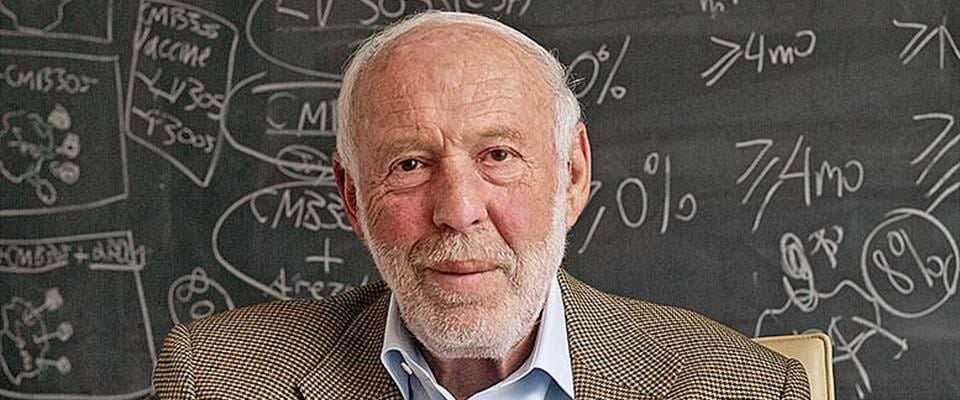Despite this article’s title making him sound like a Big Bang Theory secondary character, Revolut CEO & founder Nik Storonsky is a bold and ambitious man. Not only does he want to make his company the #1 global bank, he also has a “side gig” revolut-ionizing Venture Capital.
His VC firm, QuantumLight, recently secured a cool $250 million in funding, with a very intriguing thesis at its core: AI can systematize and enhance VC decision-making.
“Really, is AI coming for my job too?!” I shivered internally, before recalling Daddy Marc (the a8n in a16z) confidently declaring a few weeks ago that venture capital was immune to AI disruption.
So which is it really? What questions does the Storonsky experiment at QuantumLight raise, and what does it reveal about the future of VC?
Let there be QuantumLight
At its inception, QuantumLight was the offspring of Nik Storonsky’s frustration with the VC value proposition : herd mentality, “strong” beliefs gone with the wind and market turndowns are markers of the erratic, human process of raising VC money.
Human bias, Storonsky argues, is the weakest link in traditional VC decision-making, and he aims to eliminate it completely.
Three years after announcing QuantumLight, the fund boasts a final $250m in funding, including $60m from Storonsky himself who definitely puts his money where his mouth is and 17 investments already made, all of which were recommended by AI with no exceptions. The fund will back startups in any sector anywhere in the world, at Series B and C stage. 70% of the firm’s portfolio are US-based, across AI, Web3, Fintech, SaaS and marketplaces.
QuantumLight isn’t shy about what’s under the hood either: its proprietary AI model, Aleph, has ingested data from the entire universe of venture-backed companies since the ‘90s and plows through 10 billion data points across more than 700,000 VC-backed companies to reveal success patterns.
More interestingly, when pitted against actual past VC performance, Aleph yields a 2x better performance than the top quartile firms (performance defined as average investment multiple).
How does it work in practice? Aleph screens thousands of companies every day, processes this information in real time, spots trends and positive signals from objective data points (speed of capital raise, overlooked market signals) and makes investment recommendations. Moreover, it updates its own models based on the outcomes of past investments: the model is self-healing and ever-improving.
And when Aleph builds up conviction in a given company, QuantumLight moves fast: one or two meetings max with a founder before a decision is made. Due diligence becomes data-first, human interaction-second.
Take, for example, QuantumLight’s investment in Mesh, a web3 infrastructure company. Aleph identified subtle market signals and data-driven indicators of rapid growth potential. Did Mesh pitch QuantumLight traditionally? Yes, but it was Aleph’s automated assessment that greenlit the deal. Humans were involved, but primarily to validate the model’s findings, not to drive them.
Revolutionary in private markets? Maybe. But systematic, algorithm-driven investing isn’t entirely unprecedented.
The Renaissance of VC
Storonsky’s experiment has echoes of a storied name in investing: Renaissance Technologies. As their website crisply explains: “Renaissance Technologies is an investment management firm that employs mathematical and statistical methods in the design and execution of its investment programs.”
Their Medallion Fund, a quant-heavy, algorithm-driven hedge fund with internal capital only, famously averaged annual returns of 39.1% after fees (66% before fees) over 30 years from 1988 to 2018. A $100 investment in Medallion in 1988 would have turned into a $400m fortune by 2018, and probably much more by now, since Medallion still managed to yield a 30% return in 2024.
The magic? A proprietary algorithmic approach that systematically identifies and exploits market inefficiencies. The most data-driven approach to investment there is. Sounds familiar?
I have no insider information to tell whether Renaissance was an inspiration for QuantumLight, but no doubt that Storonsky’s past as a quant trader at Lehman Brothers and Credit Suisse has ingrained this data-driven approach to investment deep in his system. And that’s probably the reason why QuantumLight has a team of engineers, data scientists, quant traders rather than your usual growth equity VC.
The question now: Can VC, traditionally a qualitative, relationship-driven game, mimic hedge fund success? Renaissance thrived in the liquid public markets, rich with minute-by-minute data. VC, on the other hand, is marked by opacity, sparse data, and illiquid, high-risk investments. Can QuantumLight replicate Renaissance’s method effectively?
AI on this "side of the table"
To fully appreciate QuantumLight’s experiment, it's essential to grasp the current state of the VC landscape, and boy is this landscape brutal!
Multi-stage giants like a16z and Sequoia increasingly dominate with ever more capital and deal access. Mathematically, a handful of firms having a significant portion of the total VC capital and top tier investor teams will be bound to have a significant portion of the wins - pressure is on for second and third-tier firms.
Not only that, but those multi-stage giants are also out pre-empting rounds months or even weeks after a previous close. It’s a frantic environment where VCs must decide often within weeks of a seed round whether to preempt with inflated valuations or risk being left out altogether. The competition is intense, and this intense competition requires VCs to have pre-existing relationships with founders, continuously track progress, and respond quickly to traction signals - "If it's Monday and you're hearing it for the first time and you gotta invest by Wednesday, you're just way behind".
Meanwhile, emerging managers face brutal fundraising climates, lacking the brand equity and access enjoyed by established players. Their only hope is to hop on successful deals very early and/or create a truly differentiated thesis and edge among this fierce competition to convince winning founders to go with them.
In a nutshell, at every stage, if you don’t spot and access winners early, you don’t win at all.
AI does offer an unfair advantage in this context: speed, scale, and the analytical capacity to detect and forecast early market trends from weak signals. AI models like QuantumLight’s Aleph quickly crunch vast datasets, identifying growth signals far ahead of human analysts skimming through LinkedIn for “working on something new” signals.
Additionally, operational tasks - from meeting scheduling to memo writing to due diligence to post-investment reporting - can benefit significantly from AI-driven automation: AI can easily 10x a VC’s output when used as a true Operating System.
Yet, limitations remain. Historical data might blind algorithms to unprecedented shifts, and qualitative factors - such as founder charisma, emotional resilience, or team cohesion - remain notoriously difficult to quantify algorithmically (although some founders I meet tell me that Hume AI is getting very good at perceiving emotions).
QuantumLight’s reliance on extensive data sets begs the question: from where and whom do these vast datasets originate? And once every VC has built their internal dataset, how do they turn them into an enduring moat like Medallion’s algorithm is to Renaissance?
Humans after all?
My take on the matter is that despite AI’s potential - that definitely needs to be leveraged by VC firms if they want to be successful in the coming years - there remains an undeniable necessity for human judgment in VC, especially at seed and pre-seed stages.
Data scarcity in early-stage companies forces VCs to rely on intuition, gut feel, and personal assessments of founders. Founder relationships are equally critical.
AI can’t meet you for coffee a couple of times when you’re iterating on an idea, throwing ideas. It can’t learn about your unique background while befriending you and getting to know you on a personal level.
And once AI has invested, although ChatGPT proves to be a great therapist, it can’t provide the emotional support a human can, namely the proverbial shoulder to cry on. Or the actual one: I vividly remember the day one of the founders of my firm’s portfolio found out that the lead investor in his current round was dropping. The world collapsed around him - but I happened to be there, and did provide the emotional support. Actually, what it took from me on that night was to order duck burgers, crack open a couple of cold ones and blast some Guns N’Roses out loud - but y’know. Fast forward to 2025, that company is profitable, growing, hasn’t raised a dime since and that founder is one of my best friends.
QuantumLight itself implicitly acknowledges this human necessity, recently releasing playbooks designed explicitly for coaching founders to high performance based on Revolut’s internal playbooks. Mentorship, emotional intelligence, strategic insights - these inherently human elements still play central roles, even if QuantumLight wants to systematically optimize them in their portfolio company.
As Marc Andreessen emphasized recently, venture capital remains a fundamentally human endeavor, even as the tools evolve.
And yet, it (re)turns!
The very nature of VC makes it too early to say whether Storonsky’s experiment will prove successful, but very simple to analyze: whether or not the fund has returns that are in the top decile of its vintage will be a straightforward, unidimensional way to tell.
Yet, incidentally, it’s the impact its very existence can have on the operations of VCs in the future that will be more interesting than the actual returns.
Will all firms shift to AI-first investing and hire armies of engineers and quant traders or be subject to irrelevance? And if so, are we going to see ever larger multi-stage giants and watch all small-to-mid funds crumble into void?
Will the human-first narrative gain a foothold and even be a differentiator towards founders? Like some sort of artisanal craftsmanship against the large industrial players.
We might be on the brink of an heliocentric revolution, the Galilelo moment of VC - when we collectively realize that the entrepreneurial universe doesn’t revolve around us investors, and maybe it should have been the other way around all along.
The comforting narrative suggests a hybrid future: AI augmenting human intuition rather than replacing it entirely.
But a more likely scenario? Post-traction investing could become overwhelmingly automated. Algorithms will analyze billions of structured and unstructured data points, including - even disturbingly - personal and behavioral indicators, from pitch dynamics to emotional responses, perhaps even genetic profiles (if we’re being dystopian).
Human investors morph into founder coaches — and it’s probably better if they have been through the circuit as founders themselves before doing so.
Pre-product market fit (PMF) investment, however, might always require human intuition. The maieutic act of uncovering, or even instilling entrepreneurial qualities in an individual, cannot be boiled down to data points. A number of past successful investments seemed irrational at the time and eventually succeeded spectacularly (e.g., Airbnb’s famously ridiculed concept at its inception).
To quote 50 Cent:
“I'm the diamond in the dirt that ain't been found. I'm the underground king and I ain't been crowned.”
Bazinga!
Traditional VCs, therefore, face a strategic crossroads: invest heavily in proprietary AI tools or risk obsolescence. Expect partnerships, acquisitions, and internal developments of AI tools to surge among leading venture firms.
Storonsky’s QuantumLight raises pivotal questions about the integration of AI in VC. The potential is evident: efficiency, speed, and perhaps superior returns.
Will AI be a mere augmentation or a complete revolution in venture investing? Can algorithms capture the intangible qualities of truly groundbreaking entrepreneurs?
Storonsky’s experiment is underway. How the VC industry responds to these evolving dynamics remains one of the most intriguing plotlines of our financial Big Bang Theory, but we do wish him and the firm a resounding “Bazinga!” at the end.







